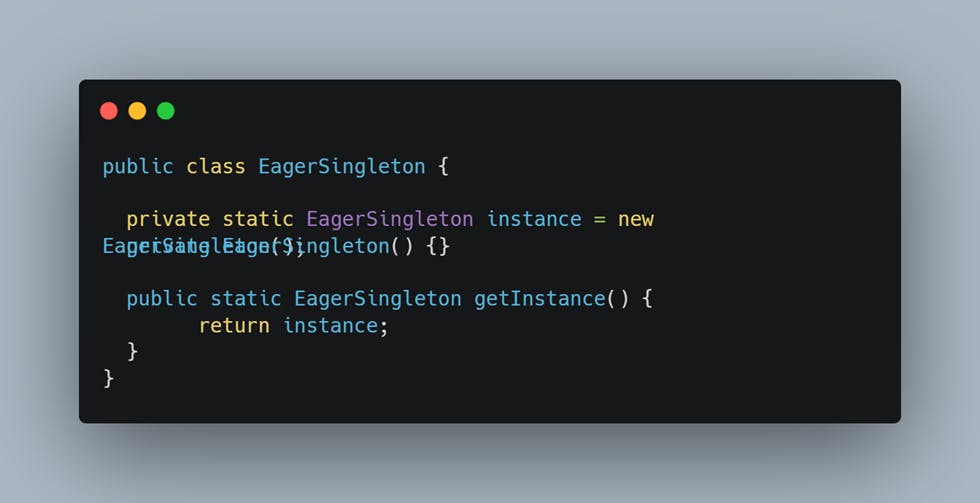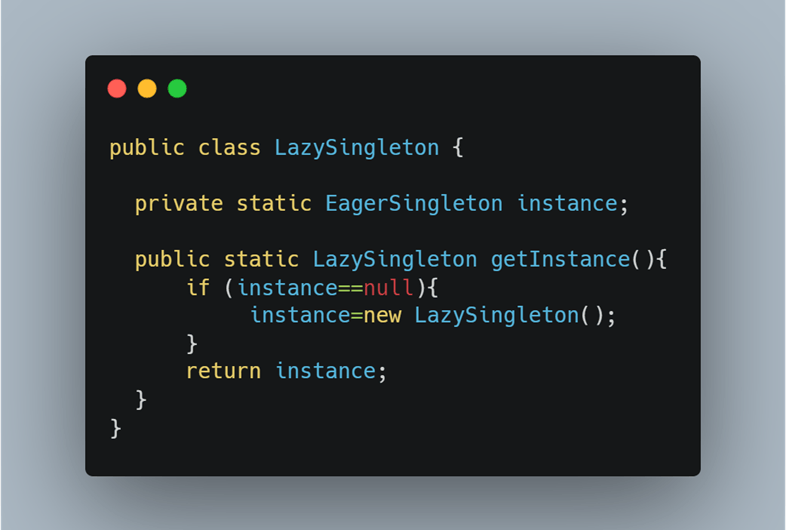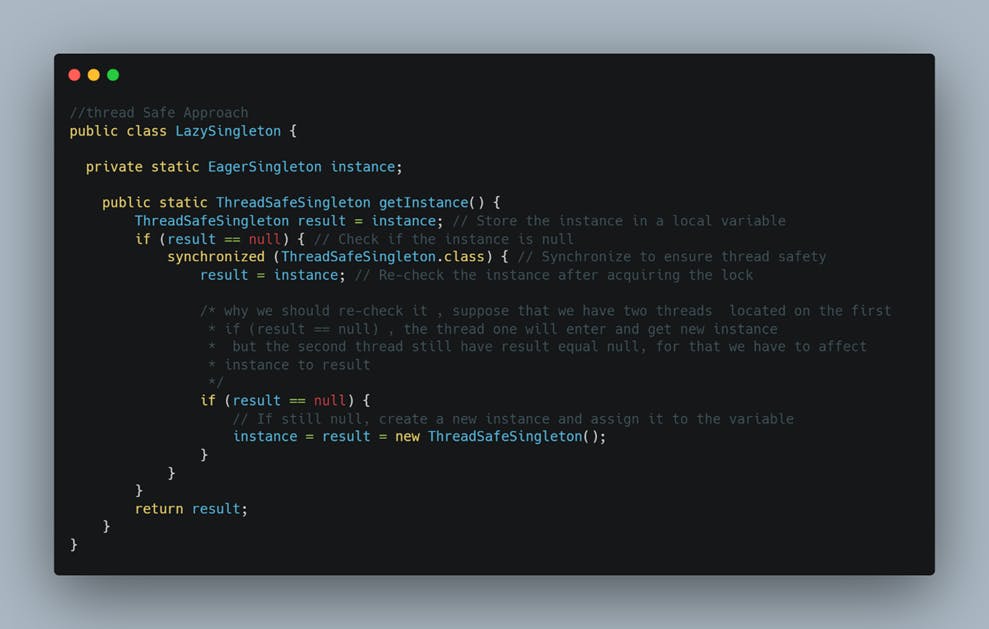In the realm of software design patterns, the Singleton pattern holds a prominent place among the creational design patterns. Creational patterns focus on object creation mechanisms, providing solutions for creating objects in a controlled and efficient manner. The Singleton pattern specifically addresses the need for ensuring that a class has only one instance throughout the execution of a program.
The Singleton pattern in Java adheres to two fundamental principles:
Restricting Instantiation: The Singleton pattern restricts the instantiation of a class, ensuring that only one instance of the class exists within the Java Virtual Machine (JVM).
Global Access Point: The Singleton class provides a global access point, typically through a static method, to retrieve the instance of the class.
Singleton Features:
When implementing the Singleton pattern in Java, there are various approaches you can take. However, they all share the following common concepts:
Private Constructor: The Singleton class should have a private constructor to prevent other classes from directly instantiating it. By making the constructor private, you ensure that only the Singleton class itself can create its instance.
Private Static Variable: The Singleton class should have a private static variable that holds the single instance of the class. This variable is usually named instance and is of the same type as the Singleton class itself.
Public Static Method: The Singleton class should provide a public static method, often named getInstance(), which serves as the global access point for obtaining the Singleton instance. This method is responsible for creating the instance if it doesn't exist yet and returning the existing instance if it does.
Using these concepts, you can implement the Singleton pattern in various ways, such as:
Eager Initialization:
In this approach, the instance is created eagerly as a static variable when the Singleton class is loaded.
* The private constructor is called to create the instance, and subsequent calls to getInstance() return the already created instance.

Pros of Eager Initialization:
Simplicity: Eager Initialization is straightforward to implement. The instance is created when the class is loaded, ensuring that it is available immediately when needed.
Thread Safety: Eager Initialization provides inherent thread safety because the instance is created during class loading, which occurs in a single-threaded manner. This eliminates the need for explicit synchronization or locking mechanisms.
Performance: Since the instance is created in advance, there is no overhead associated with checking and creating the instance during runtime. Accessing the Singleton instance is fast and efficient
Cons of Eager Initialization:
Early Object Creation: With Eager Initialization, the Singleton instance is created even if it is never used in the application. This can lead to unnecessary memory usage and potentially impact startup time or resource consumption.
Lack of Lazy Initialization: Eager Initialization does not support lazy initialization, meaning the instance is created regardless of whether it is needed at that point in the application's execution. This can be a drawback in situations where the Singleton object is resource-intensive or costly to create.
Lazy Initialization(Non-Thread Safe):
In this approach, the instance is created lazily when getInstance() is called for the first time.
The private constructor is called only when the instance is requested, and subsequent calls to getInstance() return the already created instance.

Pros of Lazy Initialization (Non-Thread Safe):
Lazy Initialization: The Singleton instance is created only when it is first requested. T his approach allows for the efficient utilization of resources, as the instance is not created unnecessarily during the application's execution.
On-Demand Creation: The Singleton instance is created only when it is needed, potentially deferring resource-intensive or time-consuming operations until they are required. This can improve application startup time and overall performance.
Memory Efficiency: By postponing the creation of the Singleton instance until it is needed, memory consumption is reduced, especially in cases where the Singleton object is large or resource-heavy.
Cons of Lazy Initialization (Non-Thread Safe):
Lack of Thread Safety: Lazy Initialization without proper synchronization is not thread-safe. In a multi-threaded environment, concurrent access to the getInstance() method can lead to the creation of multiple instances, violating the Singleton pattern's single-instance guarantee.
Limited Concurrency Support: This approach is not suitable for scenarios where multiple threads may concurrently access the getInstance(): It can lead to data corruption, inconsistent state, or other concurrency-related issues, especially in High-Concurrency Environments.
Lazy Initialization(Thread Safe):
Elaborate on the lazy initialization approach while addressing thread safety concerns.
Explain synchronization mechanisms, such as synchronized blocks or double-checked locking, to ensure thread safety during instance creation.
The first approach to achieve thread safety :
This approach is effective in ensuring thread safety but may introduce performance overhead due to the use of synchronized methods.

This overhead is only necessary for the initial threads that attempt to create separate instances. To minimize this overhead, we can employ the double-checked locking principle.
In the double-checked locking approach, we use a synchronized block within an if condition, accompanied by an additional check. This additional check ensures that only one instance of the singleton class is created. By incorporating this principle, we can optimize the code and reduce the synchronized block's usage. The following code snippet demonstrates the implementation using double-checked locking:





